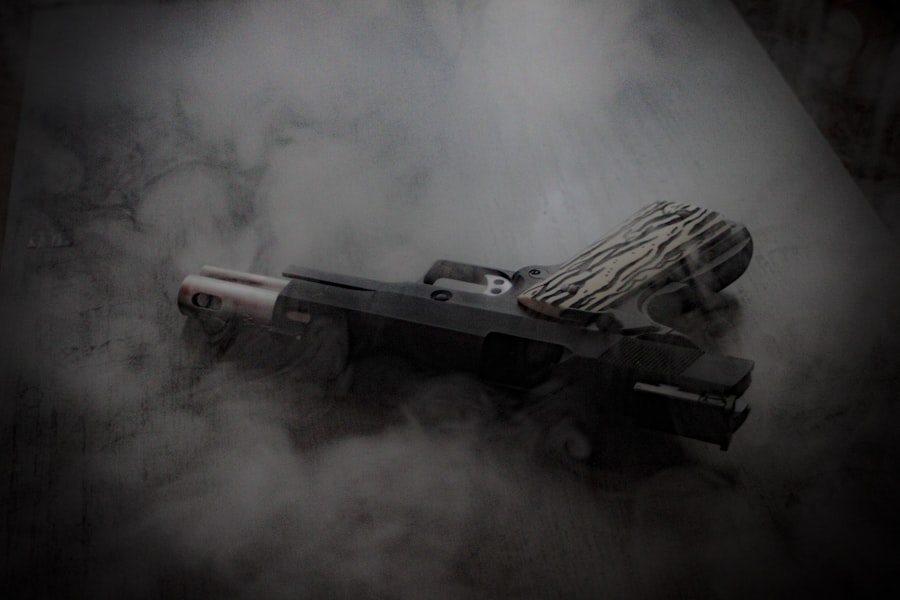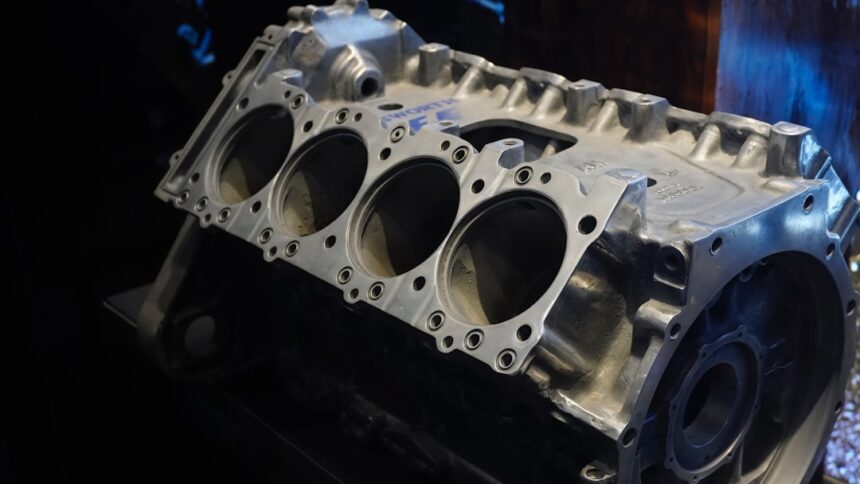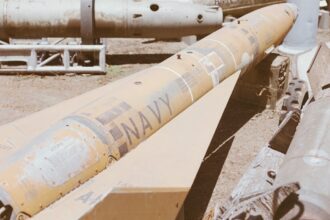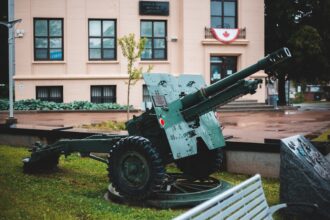In the realm of modern warfare, the development and procurement of expensive weapons systems have become a focal point for nations around the globe. These advanced military technologies, ranging from stealth bombers to sophisticated missile defense systems, are often seen as essential components of national security. The staggering costs associated with these weapons can reach into the billions, prompting governments to invest heavily in their research, development, and deployment.
However, the high price tag of these systems does not guarantee their effectiveness or invulnerability. In fact, the very complexity and sophistication that make these weapons formidable can also render them susceptible to a variety of vulnerabilities. The discussion surrounding expensive weapons is not merely about their financial implications; it encompasses a broader examination of their operational reliability and strategic value.
As nations continue to invest in cutting-edge military technology, it becomes increasingly important to understand the factors that contribute to the vulnerabilities of these systems. This article will explore various aspects that can compromise the effectiveness of expensive weapons, including technological risks, maintenance challenges, and geopolitical considerations. By delving into these issues, a clearer picture emerges of the intricate balance between investment in advanced military capabilities and the inherent risks that accompany them.
Key Takeaways
- Expensive weapons are a significant investment for governments and organizations, but they come with their own set of vulnerabilities and risks.
- Factors contributing to vulnerability include technological advancements, cybersecurity risks, maintenance and reliability issues, and the cost of replacement and repair.
- Vulnerability to theft and sabotage, impact of environmental conditions, training and human error, and political and geopolitical considerations also play a role in the susceptibility of expensive weapons.
- Strategies for mitigating vulnerability include implementing robust cybersecurity measures, regular maintenance and reliability checks, training and education, and considering political and geopolitical implications.
- In conclusion, the future outlook for expensive weapons involves a continued focus on mitigating vulnerabilities through a combination of technological advancements, strategic planning, and international cooperation.
Factors Contributing to Vulnerability
The vulnerabilities of expensive weapons systems can be attributed to a multitude of factors that intertwine technology, human elements, and environmental conditions. One significant aspect is the complexity of modern weaponry itself. As systems become more advanced, they often incorporate numerous components and subsystems that must work in harmony.
This complexity can lead to unforeseen failures or malfunctions, which may compromise operational readiness. For instance, a minor software glitch in a sophisticated missile guidance system could render an entire arsenal ineffective during critical moments. Moreover, the rapid pace of technological advancement poses another challenge.
As new technologies emerge, older systems may become obsolete or less effective against evolving threats. This obsolescence can create a gap in capabilities, leaving nations vulnerable to adversaries who have adapted to counter existing technologies. The interplay between innovation and vulnerability is a delicate balance that military strategists must navigate carefully.
Technology and Cybersecurity Risks

In an era where technology underpins nearly every aspect of military operations, cybersecurity has emerged as a paramount concern for expensive weapons systems. The integration of digital technologies into weaponry has enhanced capabilities but has also introduced new vulnerabilities. Cyberattacks can target critical systems, potentially disabling or manipulating weapons before they are deployed.
The infamous Stuxnet virus serves as a stark reminder of how cyber warfare can disrupt even the most sophisticated military infrastructure. Furthermore, as nations increasingly rely on interconnected systems for command and control, the risk of cyber intrusions grows exponentially. A successful cyberattack could not only incapacitate individual weapons but could also compromise entire military operations.
The implications of such vulnerabilities extend beyond immediate tactical concerns; they can alter the strategic landscape and shift the balance of power among nations.
Maintenance and Reliability Issues
| Issue | Frequency | Downtime (hours) |
|---|---|---|
| Equipment breakdowns | Weekly | 4 |
| Unplanned maintenance | Monthly | 8 |
| Asset failure | Quarterly | 12 |
The maintenance of expensive weapons systems is another critical factor contributing to their vulnerability. These advanced technologies often require specialized knowledge and resources for upkeep, which can strain military budgets and personnel. Regular maintenance is essential to ensure that systems remain operational and effective; however, logistical challenges can hinder timely repairs or upgrades.
In some cases, aging equipment may become increasingly difficult to maintain, leading to reduced reliability over time. Additionally, the reliance on complex supply chains for spare parts and support services can introduce further vulnerabilities. Disruptions in these supply chains—whether due to geopolitical tensions or natural disasters—can delay necessary repairs and maintenance, leaving military forces with diminished capabilities when they are needed most.
The interplay between maintenance challenges and operational readiness underscores the importance of strategic planning in managing expensive weapons systems.
Cost of Replacement and Repair
The financial implications of maintaining expensive weapons systems extend beyond initial procurement costs; they encompass ongoing expenses related to repair and replacement as well. As these systems age or sustain damage during operations, the costs associated with restoring them to full functionality can be staggering. For many nations, budgeting for such expenses becomes a complex balancing act between maintaining current capabilities and investing in future technologies.
Moreover, the decision to replace aging systems with newer models often involves significant financial commitments that can strain national budgets. This dilemma is particularly pronounced in times of economic uncertainty when governments must prioritize spending across various sectors. The challenge lies in ensuring that military forces remain equipped with effective tools while navigating the financial realities of maintaining an advanced arsenal.
Vulnerability to Theft and Sabotage

The potential for theft and sabotage represents another layer of vulnerability for expensive weapons systems. As military technologies become more advanced and valuable, they also attract the attention of adversaries seeking to gain an advantage through espionage or direct action. High-profile incidents of theft or attempted sabotage have underscored the need for robust security measures surrounding sensitive military assets.
In addition to external threats, internal vulnerabilities can also pose significant risks. Insider threats—whether from disgruntled employees or compromised personnel—can lead to unauthorized access or manipulation of critical systems. The consequences of such breaches can be dire, potentially compromising national security and operational effectiveness.
As nations invest in expensive weapons systems, they must also prioritize security protocols to safeguard against both external and internal threats.
Impact of Environmental Conditions
Environmental conditions play a crucial role in determining the effectiveness and reliability of expensive weapons systems. Extreme weather events, such as hurricanes or severe cold snaps, can adversely affect operational capabilities and maintenance schedules. For instance, aircraft designed for specific climates may struggle to perform optimally in harsh conditions, leading to reduced effectiveness during critical missions.
Moreover, prolonged exposure to environmental factors can accelerate wear and tear on equipment, necessitating more frequent repairs or replacements. Military planners must account for these variables when deploying forces in diverse environments, ensuring that systems are adequately prepared for the challenges they may face. The interplay between environmental conditions and operational readiness highlights the need for adaptable strategies in managing expensive weapons systems.
Training and Human Error
Human factors are an often-overlooked aspect of vulnerability concerning expensive weapons systems. Even the most advanced technology relies on skilled personnel for operation and maintenance. Insufficient training or human error can lead to catastrophic failures during critical moments.
For example, a miscalculation during a missile launch sequence could result in unintended consequences that compromise mission objectives. Furthermore, as technology evolves rapidly, continuous training becomes essential to ensure that personnel remain proficient in operating complex systems. The challenge lies in keeping pace with advancements while also addressing potential gaps in knowledge or skills among military personnel.
Investing in comprehensive training programs is vital for mitigating human error and enhancing overall operational effectiveness.
Political and Geopolitical Considerations
The political landscape significantly influences the vulnerability of expensive weapons systems. Geopolitical tensions can create an environment where nations feel compelled to invest heavily in advanced military technologies as a deterrent against perceived threats. However, this arms race mentality can lead to increased vulnerabilities as nations prioritize quantity over quality or fail to adequately address underlying issues related to maintenance and training.
Moreover, political decisions regarding defense spending can impact the long-term viability of expensive weapons programs. Budget cuts or shifts in strategic priorities may result in reduced funding for essential maintenance or upgrades, ultimately compromising operational readiness. The interplay between political considerations and military capabilities underscores the need for strategic foresight in managing expensive weapons systems.
Strategies for Mitigating Vulnerability
To address the myriad vulnerabilities associated with expensive weapons systems, nations must adopt comprehensive strategies that encompass technological innovation, robust training programs, and proactive maintenance practices. Investing in cybersecurity measures is paramount to safeguarding against potential cyber threats that could compromise critical systems. Additionally, fostering collaboration between military branches and private industry can enhance research and development efforts aimed at improving system resilience.
Furthermore, prioritizing training initiatives ensures that personnel are equipped with the skills necessary to operate complex technologies effectively. Regular drills and simulations can help mitigate human error while reinforcing operational protocols. By adopting a holistic approach that addresses both technological and human factors, nations can enhance the reliability and effectiveness of their expensive weapons systems.
Conclusion and Future Outlook
As nations continue to invest heavily in expensive weapons systems, understanding their vulnerabilities becomes increasingly critical for maintaining national security. The interplay between technological advancements, maintenance challenges, human factors, and geopolitical considerations creates a complex landscape that military strategists must navigate carefully. While these advanced technologies offer significant advantages on the battlefield, they are not without risks.
Looking ahead, it is essential for nations to adopt proactive measures that address these vulnerabilities while continuing to innovate within their military arsenals. By prioritizing cybersecurity, enhancing training programs, and ensuring robust maintenance practices, countries can bolster their defense capabilities while mitigating potential risks associated with expensive weapons systems. Ultimately, striking a balance between investment in advanced technologies and addressing inherent vulnerabilities will be crucial for ensuring long-term national security in an ever-evolving global landscape.
In the ever-evolving landscape of modern warfare, the vulnerability of high-cost weapons has become a pressing concern for military strategists and policymakers. As highlighted in the article “Why High-Cost Weapons Are Vulnerable,” the increasing sophistication of low-cost countermeasures poses significant threats to expensive military assets. This topic is further explored in a related article on the same platform, which delves into the strategic implications of these vulnerabilities and the need for adaptive defense strategies. For more insights, you can read the related article on In The War Room.
FAQs
What are high-cost weapons?
High-cost weapons are advanced military equipment and technology that are designed for combat and defense purposes. These weapons often require significant investment in research, development, and production.
Why are high-cost weapons vulnerable?
High-cost weapons are vulnerable due to advancements in technology and tactics that can render them obsolete or ineffective. Additionally, they may be vulnerable to cyber attacks, sabotage, or other forms of asymmetric warfare.
What are some examples of high-cost weapons that have been vulnerable?
Examples of high-cost weapons that have been vulnerable include expensive fighter jets that have been outperformed by cheaper, more agile aircraft, and advanced missile defense systems that have been circumvented by new offensive technologies.
How can the vulnerability of high-cost weapons be mitigated?
The vulnerability of high-cost weapons can be mitigated through ongoing research and development to stay ahead of emerging threats, as well as through the integration of advanced technologies such as artificial intelligence and cyber defense measures. Additionally, diversifying military capabilities and strategies can help reduce reliance on any single high-cost weapon system.




